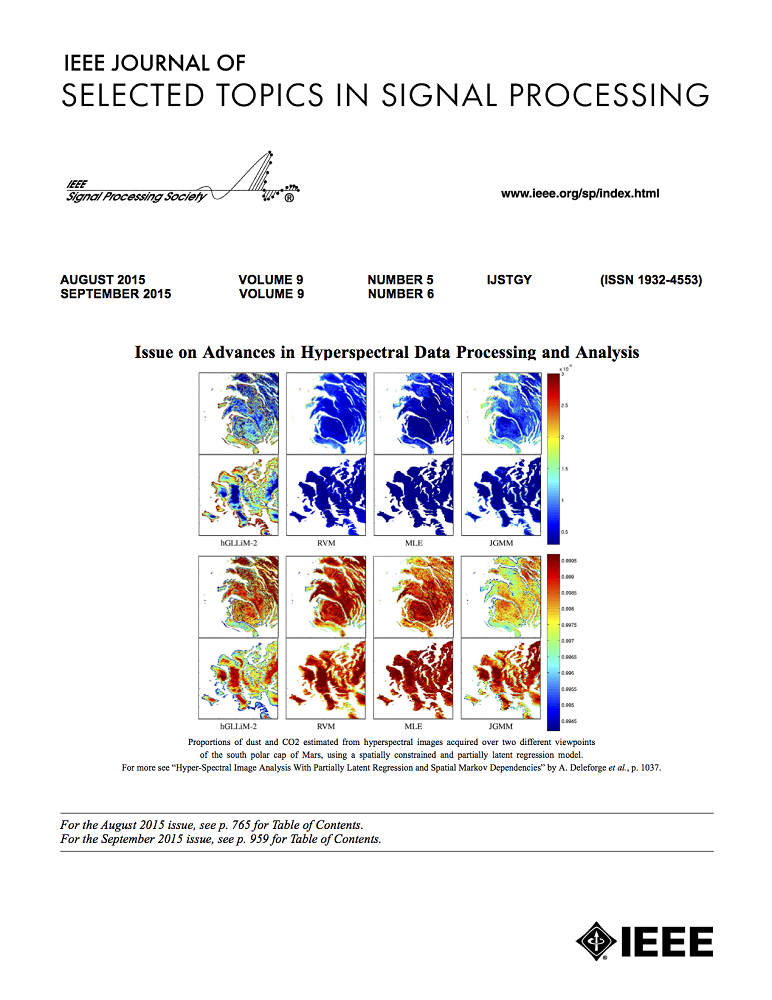超大规模天线阵列系统的分布式信号处理:最新技术和未来方向
IF 8.7
1区 工程技术
Q1 ENGINEERING, ELECTRICAL & ELECTRONIC
IEEE Journal of Selected Topics in Signal Processing
Pub Date : 2025-02-11
DOI:10.1109/JSTSP.2025.3541386
引用次数: 0
摘要
超大规模天线阵列(ELAA)在实现下一代无线通信系统的功能方面起着至关重要的作用。然而,随着天线数量的增加,ELAA系统面临着巨大的瓶颈,如过高的互连成本和高计算复杂度。高效的分布式信号处理(SP)算法在克服这些挑战方面显示出巨大的希望。在本文中,我们提供了针对ELAA系统的分布式SP算法的全面概述,旨在解决这些瓶颈。我们首先介绍了ELAA系统的三种典型形式:单基站ELAA系统、协调分布式天线系统和与新兴技术集成的ELAA系统。对于每种形式,我们回顾了文献中相关的分布式SP算法。此外,我们还概述了几个重要的未来研究方向,这些方向对于提高ELAA系统的性能和实用性至关重要。本文章由计算机程序翻译,如有差异,请以英文原文为准。
Distributed Signal Processing for Extremely Large-Scale Antenna Array Systems: State-of-the-Art and Future Directions
Extremely large-scale antenna arrays (ELAA) play a critical role in enabling the functionalities of next generation wireless communication systems. However, as the number of antennas increases, ELAA systems face significant bottlenecks, such as excessive interconnection costs and high computational complexity. Efficient distributed signal processing (SP) algorithms show great promise in overcoming these challenges. In this paper, we provide a comprehensive overview of distributed SP algorithms for ELAA systems, tailored to address these bottlenecks. We start by presenting three representative forms of ELAA systems: single-base station ELAA systems, coordinated distributed antenna systems, and ELAA systems integrated with emerging technologies. For each form, we review the associated distributed SP algorithms in the literature. Additionally, we outline several important future research directions that are essential for improving the performance and practicality of ELAA systems.
求助全文
通过发布文献求助,成功后即可免费获取论文全文。
去求助
来源期刊

IEEE Journal of Selected Topics in Signal Processing
工程技术-工程:电子与电气
CiteScore
19.00
自引率
1.30%
发文量
135
审稿时长
3 months
期刊介绍:
The IEEE Journal of Selected Topics in Signal Processing (JSTSP) focuses on the Field of Interest of the IEEE Signal Processing Society, which encompasses the theory and application of various signal processing techniques. These techniques include filtering, coding, transmitting, estimating, detecting, analyzing, recognizing, synthesizing, recording, and reproducing signals using digital or analog devices. The term "signal" covers a wide range of data types, including audio, video, speech, image, communication, geophysical, sonar, radar, medical, musical, and others.
The journal format allows for in-depth exploration of signal processing topics, enabling the Society to cover both established and emerging areas. This includes interdisciplinary fields such as biomedical engineering and language processing, as well as areas not traditionally associated with engineering.
 求助内容:
求助内容: 应助结果提醒方式:
应助结果提醒方式:


